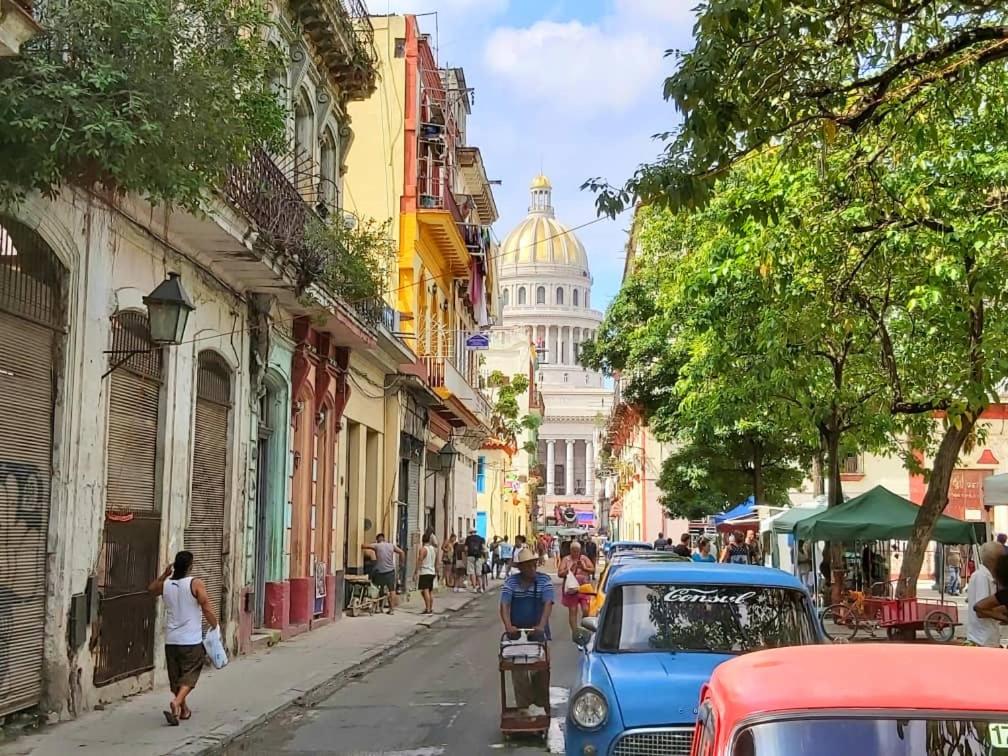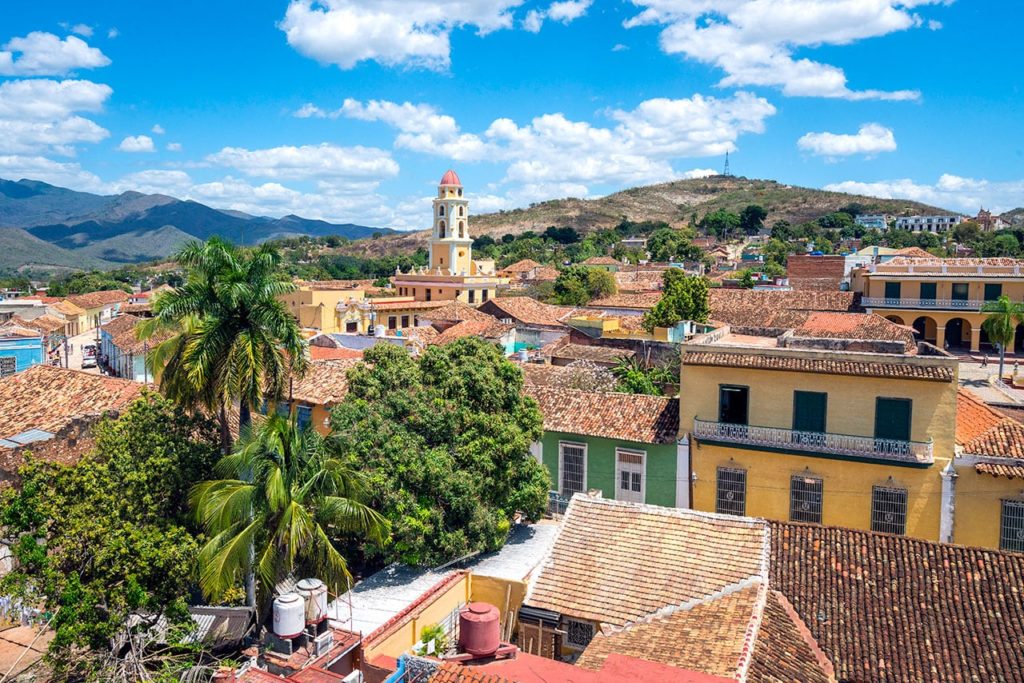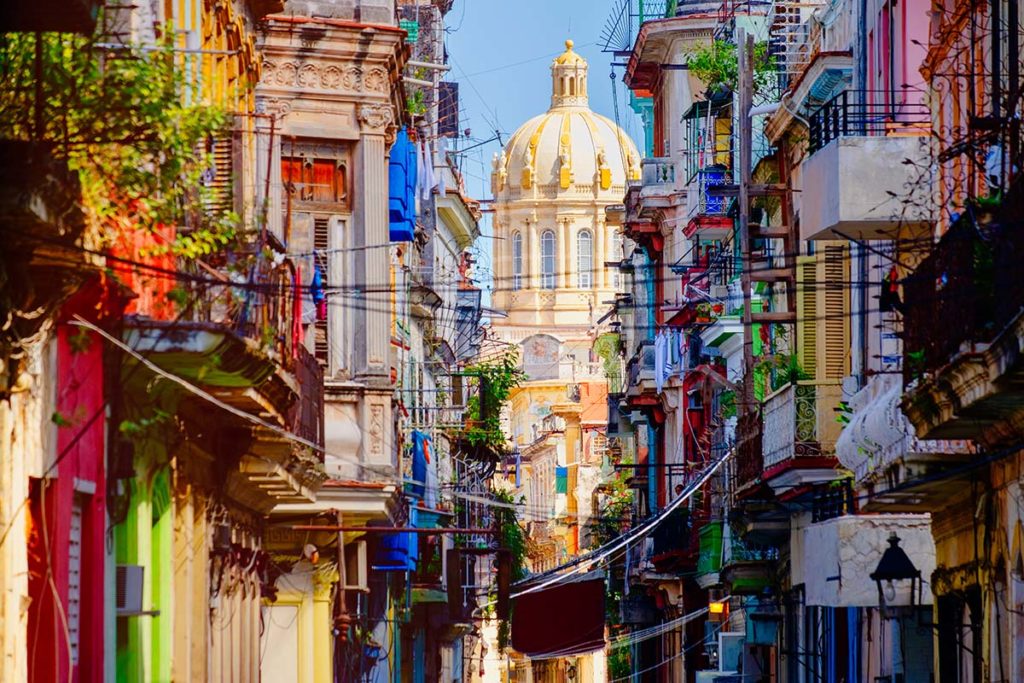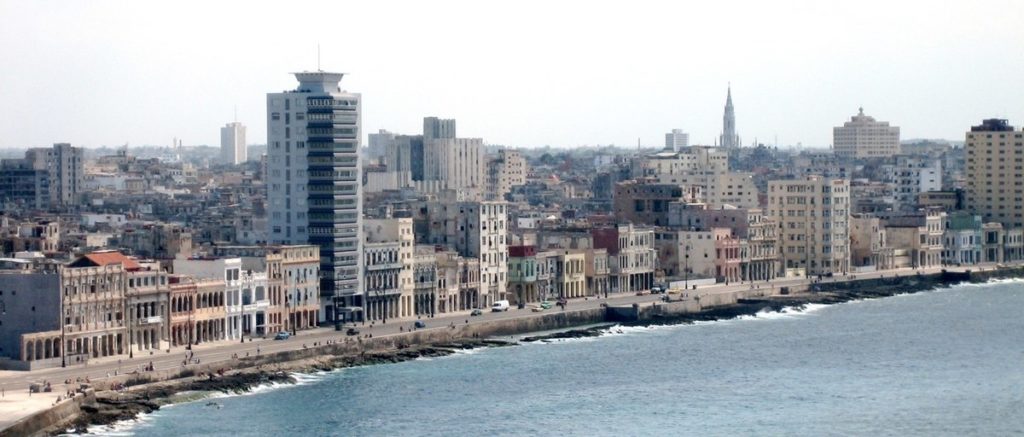LA HABANA VIEJA HOY, ESCENAS EN SUS CALLES CON ESCASOS TURISTAS. PHOTOS.
Artistas callejeros, adivinos, mendigos, especialistas en el tarot y la lectura de manos, santeros, pagadores de promesas y carteristas. La Habana Vieja siempre está en ebullición y quienes viven en ella tienen que ganarse el pan con cualquier oficio. El talento, la picardía y la gracia criolla son, en medio de la pobreza generalizada del país, las únicas herramientas disponibles para irse a casa con un poco de dinero en el bolsillo.
POR LA CALLE OBISPO, la gente se empuja e intenta abrirse camino frenéticamente, entrando y saliendo de los comercios, farmacias, timbiriches y merenderos. Llama la atención que un grupo de personas interrumpa el paso y se detenga bajo un alero. Allí está Víctor, un joven silencioso, oculto tras las bambalinas en miniatura de su Galería Morionet.
Víctor acciona los hilos de su pequeño teatro –cuyo nombre combina al pintor Claude Monet con la palabra marioneta– y hace que su muñeco, cubano y habilidoso como él, trace sobre un cartón el retrato de un hombre.
Es un talento refinado, que no se aprende en un par de semanas. El titiritero pulsa sus hilos y el muñeco sacude el pincel, lo embarra en acuarela y avanza hasta el caballete. A veces viene un perro y el muñeco lo mira cautelosamente, sin dejar de trabajar, y luego le acaricia el hocico.
El muñeco pinta en un cuartucho que puede ser el de cualquier habanero, manchado por la pintura y del cual cuelgan dos balcones enclenques.
VIDEOS- Victor, el titiritero en La Habana Vieja..
Las personas miran la escena fascinadas: el muñeco pinta en un cuartucho que puede ser el de cualquier habanero, manchado por la pintura y del cual cuelgan dos balcones enclenques. Suena un blues de Louis Armstrong en la habitación y, cuando acaba la música, dejan caer algunas monedas en la cubeta de la Galería Morionet.
A menos que sean turistas, los transeúntes no pueden ofrecer mucho y, tras distraerse por poco tiempo de las preocupaciones con el espectáculo, deben seguir caminando por una ciudad cada vez más inhóspita. Dos policías miran con recelo al joven, que sigue en lo suyo sin prestarles mayor atención.
LA HABANA VIEJA DE HOY…
En las aceras, los camareros de las paladares se abalanzan sobre la gente, los interrumpen y despliegan el menú de los restaurantes sin que se pueda hacer nada para evitarlos. Nadie puede darse el lujo de comer en La Habana Vieja, pero ellos deben verse activos y encantadores, para que el dueño, que también tiene que defender su negocio, justifique sus salarios.
Sentado en el contén de la acera, un mulato vestido de blanco impoluto ofrece una lectura de cartas. A su lado, un pomo de agua y un paño donde coloca la baraja, lista para una nueva adivinación. Pero nadie se detiene y él, aburrido, se levanta, se alisa la ropa y vuelve a sentarse.
En otra esquina, un caricaturista dibuja retratos de celebridades como Chucho Valdés y Alicia Alonso. Los niños les piden a sus padres que se dejen captar por el artista, y el hombre se pone manos a la obra: curvado sobre su espalda, sostiene una tablilla en una mano y con la otra manipula su bolígrafo.
Bullangueros y vestidos con ropas de colorines, estos artistas urbanos apenas logran ahora recoger unos pocos billetes en sus sombreros de retazos y cascabeles
Los zanqueros también se han vuelto parte del paisaje de la ciudad, en especial en grupos que transitan por las calles con mayor número de turistas. Bullangueros y vestidos con ropas de colorines, estos artistas urbanos apenas logran ahora recoger unos pocos billetes en sus sombreros de retazos y cascabeles, pues la poca llegada de viajeros los ha dejado prácticamente sin clientes.
Subidos sobre sus postes de madera esperan en alguna esquina un ómnibus de Transtur del que brote algún pequeño grupo, en los alrededores de la Plaza de Armas o del Castillo de la Fuerza. El espectáculo es breve, para evitar que los turistas regresen a la guagua sin haber dejado algo de dinero que, entre risas y canciones, les hacen saber que será mejor recibido si son “euros o dólares para estos artistas callejeros”.
Fuera del área turística, la situación adquiere sus tintes más lamentables. No es extraño encontrar a una anciana en bata de casa, sucia, que pide dinero para comprar unas pocas libras de boniato, o un pagador de promesas que arrastra una piedra, prendida a su tobillo con una cadena. A medida que avanza, como si fuera un alma en pena, alarga una palangana para que alguien le arroje unos kilos. La gente que lo mira, impresionados por las marcas en la pierna, poco tiene que darle.
OLD HAVANA TODAY, SCENES IN ITS STREETS WITH FEW TOURISTS. PHOTOS
Street performers, fortune tellers, beggars, tarot and palm reading specialists, santeros, promise keepers, and pickpockets. Old Havana is always boiling and those who live in it have to earn their bread with any job. Talent, mischief, and Creole grace are, in the midst of the country’s widespread poverty, the only tools available to go home with a little money in your pocket.
ON OBISPO STREET, people frantically push and try to make their way, going in and out of shops, pharmacies, stalls, and picnic areas. It is striking that a group of people interrupt the passage and stop under an eave. There is Victor, a silent young man, hidden behind the miniature scenes of his Morionet Gallery.
Víctor pulls the strings of his small theater – whose name combines the painter Claude Monet with the word puppet – and makes his puppet, Cuban and skilled like him, trace the portrait of a man on cardboard.
It is a refined talent, which is not learned in a couple of weeks. The puppeteer presses the strings on him and the puppet shakes the brush, smears it in watercolor, and walks to the easel. Sometimes a dog comes and the doll looks at it cautiously, without stopping working, and then strokes its muzzle.
The doll paints in a small room that could be that of any Havanan, stained by paint, and from which two puny balconies hang
People watch the scene fascinated: the doll paints in a small room that could be that of any Havanan, stained by paint and from which two puny balconies hang. He plays a Louis Armstrong blues in the room, and when the music ends, they drop some coins into the Morionet Gallery bucket.
Unless they are tourists, the passers-by cannot offer much and, after briefly distracted from their worries by the spectacle, they must continue walking through an increasingly inhospitable city. Two policemen look suspiciously at the young man, who goes about his business without paying much attention to them.
TODAY’S LA HAVANA VIEJA…
On the sidewalks, the waiters of the paladares pounce on people, interrupt them and display the menu of the restaurants without being able to do anything to avoid them. No one can afford to eat in Old Havana, but they must look active and charming, so that the owner, who also has to defend his business, can justify his salary.
Sitting on the curb on the sidewalk, a mulatto dressed in pristine white offers a card reading. Next to him, is a bottle of water and a cloth where he places the deck, ready for a new divination. But nobody stops and he, bored, gets up, straightens his clothes, and sits down again.
In another corner, a cartoonist draws portraits of celebrities like Chucho Valdés and Alicia Alonso. The children ask their parents to allow themselves to be captured by the artist, and the man gets to work: curved on his back, he holds a tablet in one hand and with the other manipulates his pen.
Boisterous and dressed in colorful clothes, these urban artists now barely manage to collect a few bills in their patchwork hats and bells.
The stilt walkers have also become part of the city’s landscape, especially in groups that travel through the streets with the highest number of tourists. Noisy and dressed in colorful clothes, these urban artists now barely manage to collect a few bills in their patchwork hats and bells, as the low number of travelers has left them practically without customers.
Climbing up on their wooden poles, they wait on some corner for a Transtur bus from which a small group emerges, in the surroundings of the Plaza de Armas or the Castillo de la Fuerza. The show is brief, to prevent tourists from returning to the bus without having left some money that, between laughter and songs, lets them know that it will be better received if it is “euros or dollars for these street artists.”
Outside the tourist area, the situation takes on its most unfortunate overtones. It is not uncommon to find an old woman in a dirty housedress begging for money to buy a few pounds of sweet potatoes, or a promise payer dragging a stone attached to her ankle with a chain. As she advances, as if she were a banshee, she holds out a basin for someone to throw a few pounds at her. The people who look at him, impressed by the marks on her leg, have little to give him.
Agencies/ 14yMedio/ Juan Izquierdo y Juan D. Rodriguez, La Habana/ Extractos/ Excerpts/ Internet Photos/ Arnoldo Varona/ www.TheCubanHistory.com
THE CUBAN HISTORY, HOLLYWOOD.



 LA HABANA VIEJA HOY, escenas en sus Calles con escasos Turistas. PHOTOS. VIDEOS. * OLD HAVANA TODAY, scenes in its Streets with Few Tourist. PHOTOS.
LA HABANA VIEJA HOY, escenas en sus Calles con escasos Turistas. PHOTOS. VIDEOS. * OLD HAVANA TODAY, scenes in its Streets with Few Tourist. PHOTOS.





